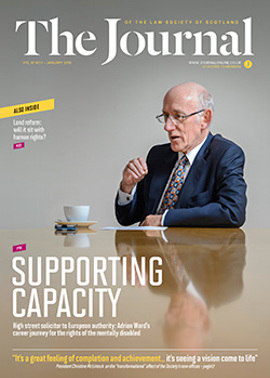Buy-to-let: no longer a good bet?

The Finance Secretary, John Swinney delivered his Scottish Budget on 16 December 2015. Given the upcoming Scottish Parliament elections in May, it came as little surprise that the tax announcements were conservative (with opposition parties arguing it should be spelt with a capital “C”). The Budget is the first time that the Scottish Parliament has had the ability to change the Scottish income tax rate as well as make changes to the two devolved taxes, land and buildings transaction tax (LBTT) and Scottish landfill tax.
No change to income tax rate
The Finance Secretary ruled out any increase in Scottish income tax when Holyrood gets its new financial powers this year. Most Scottish taxpayers will by now have received a letter informing them that they will be treated as such from April 2016, but there will be no practical impact of this so long as the Scottish rate of income tax remains at 10p. Time will tell as to whether, when and how the Scottish Parliament will use its powers to amend the Scottish rate of income tax.
LBTT: second home supplement
In a move that opposition parties criticised for “following where the Conservatives lead”, and estate agents criticised as threatening the Scottish buy-to-let market, Swinney announced a new 3% LBTT charge on the purchase of second homes from April 2016. From April 2016 all “additional homes” purchased for more than £40,000 will be liable to this supplement in addition to the LBTT charged on the property in the usual way. It means that from 1 April 2016, the LBTT on a buy-to-let or second home worth £200,000 will increase from £1,100 to £7,100.
The change follows on from a similar announcement by UK Chancellor George Osborne in his Autumn Statement, which imposed a 3% stamp duty land tax (SDLT) surcharge on second homes. Osborne announced the measure, together with a change to the capital gains tax (CGT) rules for second homes, in an effort to kickstart the property market for first-time buyers by deterring landlords from buying up properties.
Swinney justified the LBTT change in a similar vein, telling MSPs: “We need to ensure that the opportunities for first-time buyers to enter the market in Scotland are as strong as they possibly can be, and we need to make certain that tax changes elsewhere in the United Kingdom do not make it harder for people to get on the property ladder.”
Autumn Statement: more BTL bad news
The Finance Secretary had the luxury of first hearing the Chancellor’s Autumn Statement on 25 November 2015 before delivering his own Scottish Budget. As lower paid workers breathed a collective sigh of relief at the Government’s U-turn in relation to the drastic cut to tax credits announced in the Chancellor’s summer Budget, the news was not so good for buy-to-let investors.
In addition to the additional SDLT payable on second homes over £40,000, Osborne also announced changes to the CGT regime as it applies to the sale of second homes. CGT is currently payable by individuals by 31 January after the end of the tax year in which the sale arose. Following on from the “success” of the shorter time frame that has been imposed on non-resident taxpayers since 6 April 2015, all UK taxpayers will be required to inform HMRC of any gains arising on the sales of residential properties and pay any CGT due within 30 days of the sale. The measure will apply to those owing buy-to-let property and second homes where the gain is not covered by private residence relief, and is set to come into force in April 2019. Given that a person’s CGT liability can only be ascertained once all their gains and losses for the tax year in question are known, the requirement to make a payment on account will be an added complication for individuals.
With the changes to LBTT, SDLT and CGT, combined with the announcement in the July 2015 Budget in relation to the restriction on the deduction of interest from rental income for individual landlords of residential property, buy-to-let investors could be forgiven for thinking that they are currently public enemy number one in the eyes of the both the Scottish Parliament and the UK Government!
In this issue
- Cutting the RoS bouncebacks
- Landlords still?
- Split parenting: fewer tears
- Brussels briefing
- Reading for pleasure
- Opinion: Frankie McCarthy
- Book reviews
- Profile
- President's column
- DPA: one year on
- People on the move
- Team building
- Ward's words
- The end of deeds of conditions?
- Human rights and land reform: unanswered questions
- Aye to Brussels
- Appeals: the new landscape
- The 2015 Act: some more thoughts
- Three months in planning
- Buy-to-let: no longer a good bet?
- Scottish Solicitors Discipline Tribunal
- What is ScotLIS?
- Energy input
- Law firms help students' business skills
- Paralegal pointers
- Law reform roundup
- CML Handbook amended
- Service eases stress of separating parents
- Appreciation: Tahir Elçi
- The rocky road to good intentions
- Risk review 2015, risk forecast 2016
- Ask Ash
- What's in store for SYLA in 2016?
- Reflections from the Commission






